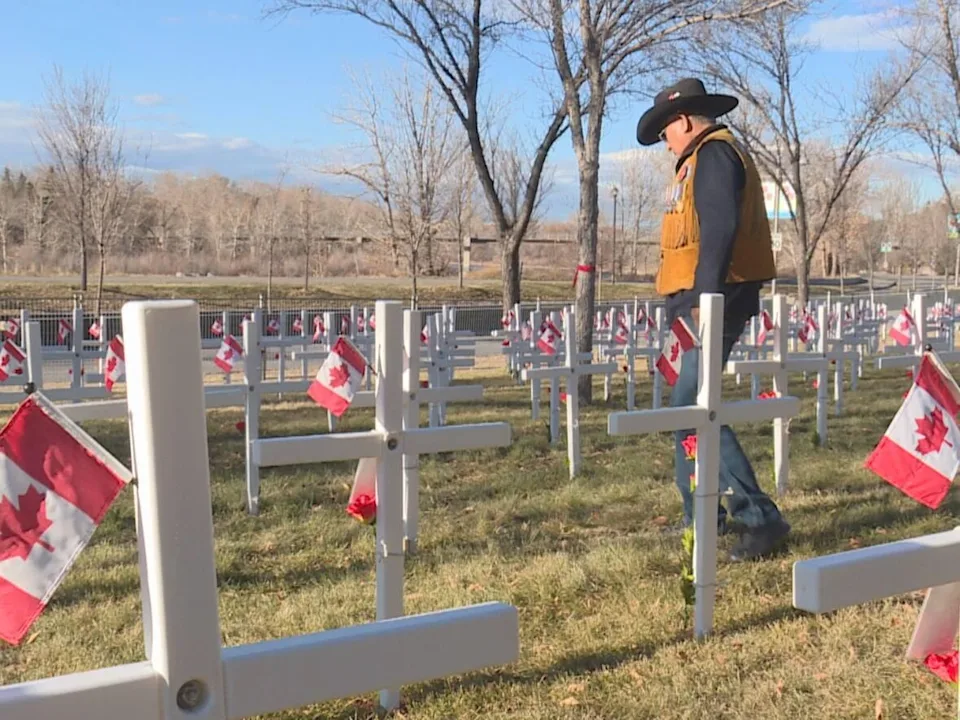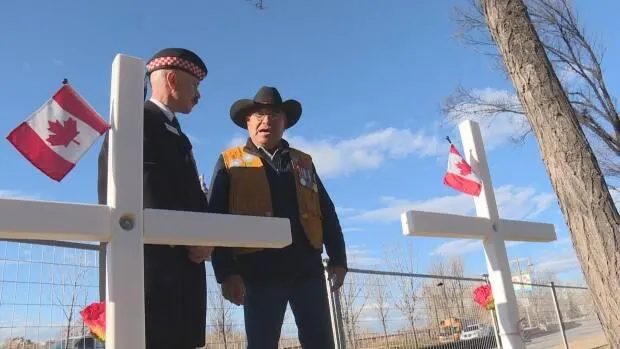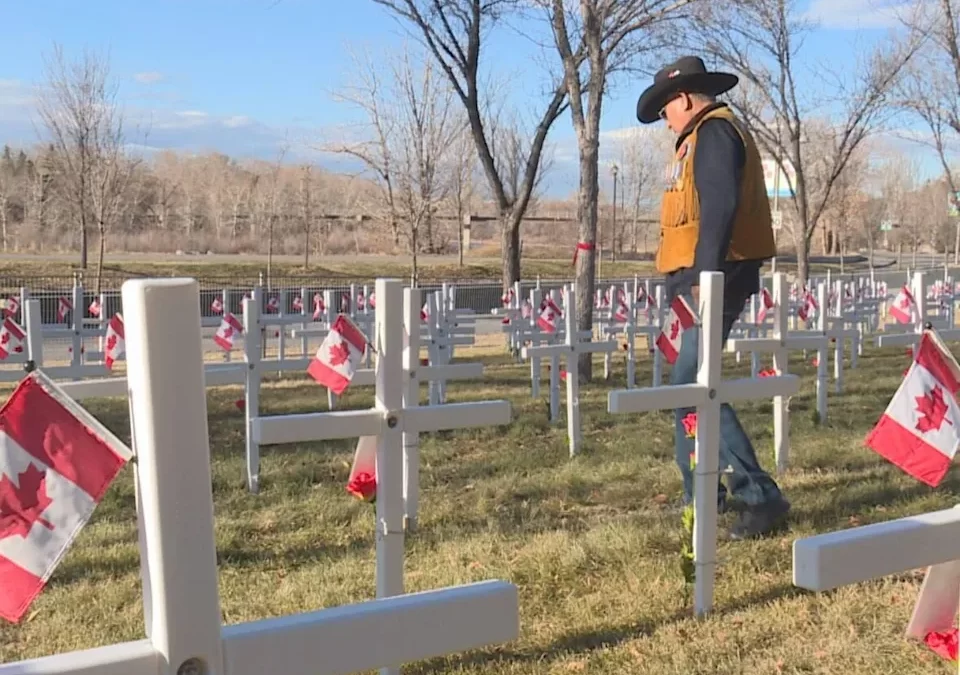source: cbc.ca
date: November 8, 2021

National Indigenous Veterans Day on Monday has sparked a conversation on how many forgotten Indigenous people served during the two world wars — with organizers of Calgary’s Field of Crosses saying six crosses represent Indigenous soldiers this year but the real total is very hard to determine.
This November, 3,500 crosses are lined up at the Field of Crosses along Memorial Drive, where thousands of fallen soldiers from southern Alberta are honoured each year.
In the First World War, Indian Affairs estimated that 4,000 First Nations men from across Canada enlisted and during the Second World War, the official number was 3,090.
But retired Maj. Kent Griffiths, a spokesperson for Calgary’s Field of Crosses, says it’s difficult to identify the true number due to how military records worked at the time.
“Status Indians weren’t even allowed to fight and they had to give up their Indian status, give up everything to go fight in the wars, so the last thing they would do is put that on their record.”
Further, in order for them to be reunited with their families upon returning from war, the Indigenous soldiers had to give up their veteran status.
“They made the ultimate sacrifice giving up their lives, but they gave up so much more before to even have that opportunity. And for the ones who didn’t pass away, we can think about them on Aboriginal Day as well.”
- WATCH | Why are there so few Indigenous names at Calgary’s Field of Crosses?
Blackfoot Elder and decorated veteran Miiksika’am, or Clarence Wolfleg, is the advisor for the Field of Crosses project.
During his time as a soldier, he participated in UN peacekeeping initiatives in Cyprus and in NATO European missions during the Cold War.
“When I went through basic training, I had a … drill sergeant that drilled my backside from Day 1 to graduation but then he turned and he said, ‘I wanted to push you because you were the only Indian soldier here and I went through the same thing. I had to make the grades [and] I had to let them know that I’m a soldier like everybody else.'”

He says the inspiration to join the military came from his father who fought in the Second World War.
“I believe the people that served in the First or Second [World] War were never really recognized — even by our own people in our community,” he said.
Now, as he proudly wears his medals, he remembers the Indigenous soldiers, and all others who bravely fought overseas.
“There’s a reason why you’re safe today. These [crosses represent] only a few and there are cemeteries in Europe, all over the world where there’s veterans buried right in the battlefield,” he said.
“So a little prayer, a little bow of the head, a little salute would help these people.”
For next year, organizers will look into attaching a symbol to the crosses that best represents the Indigenous soldiers.
Article from CBC

